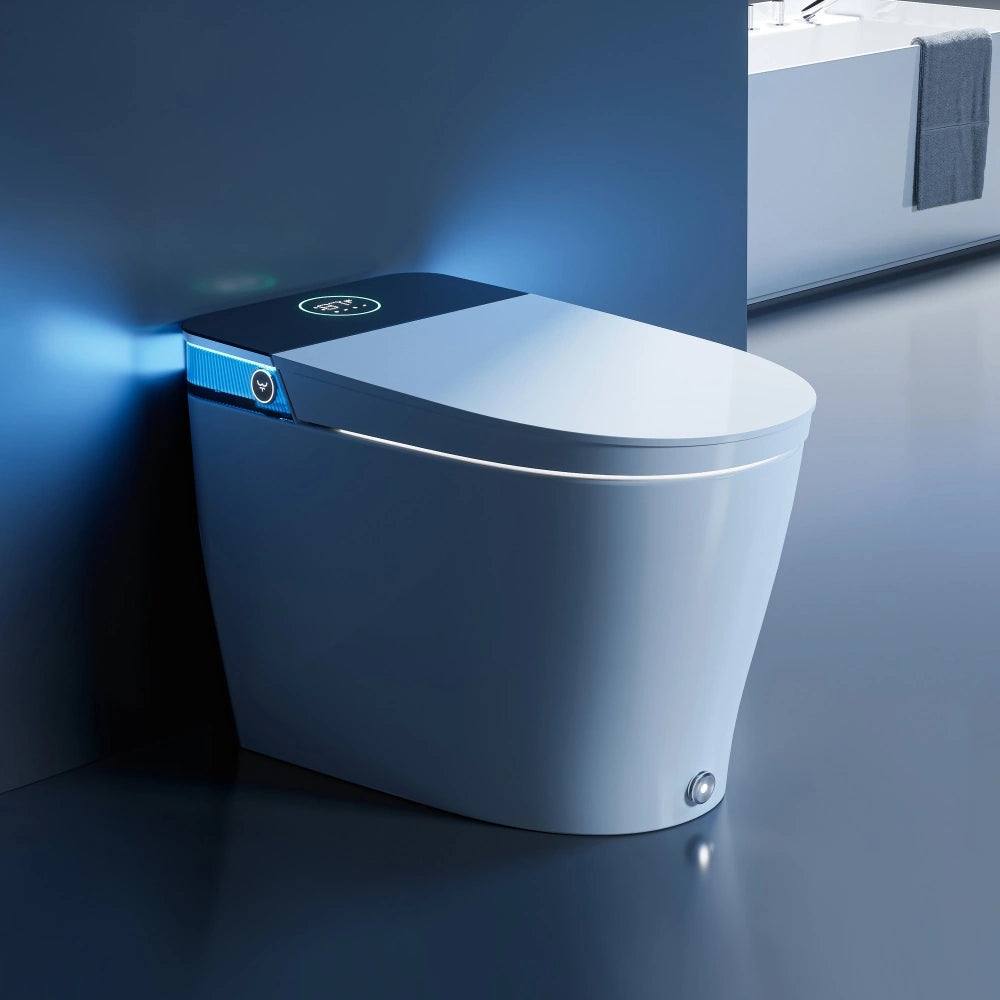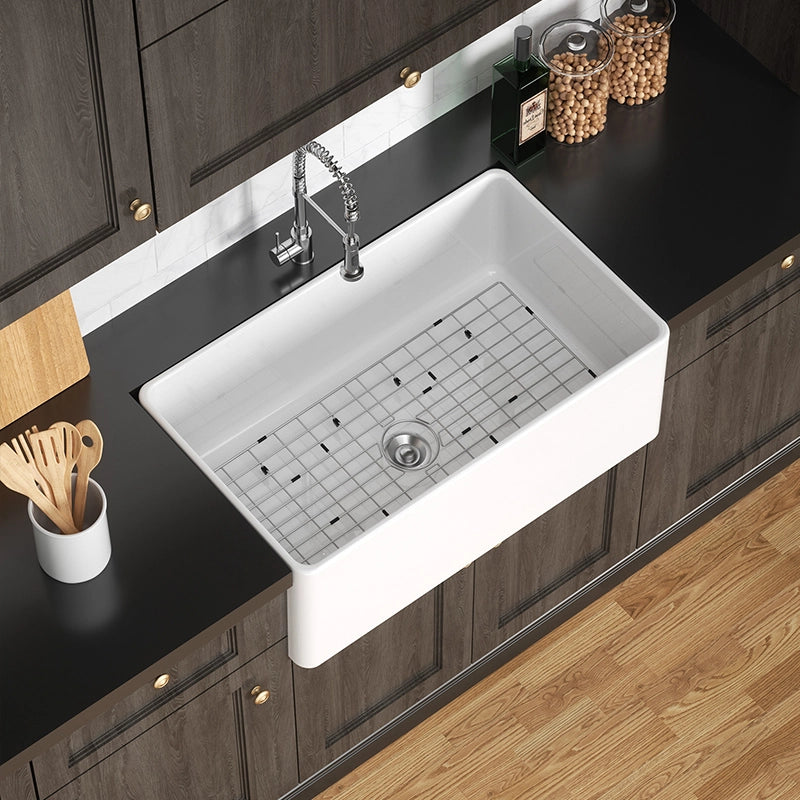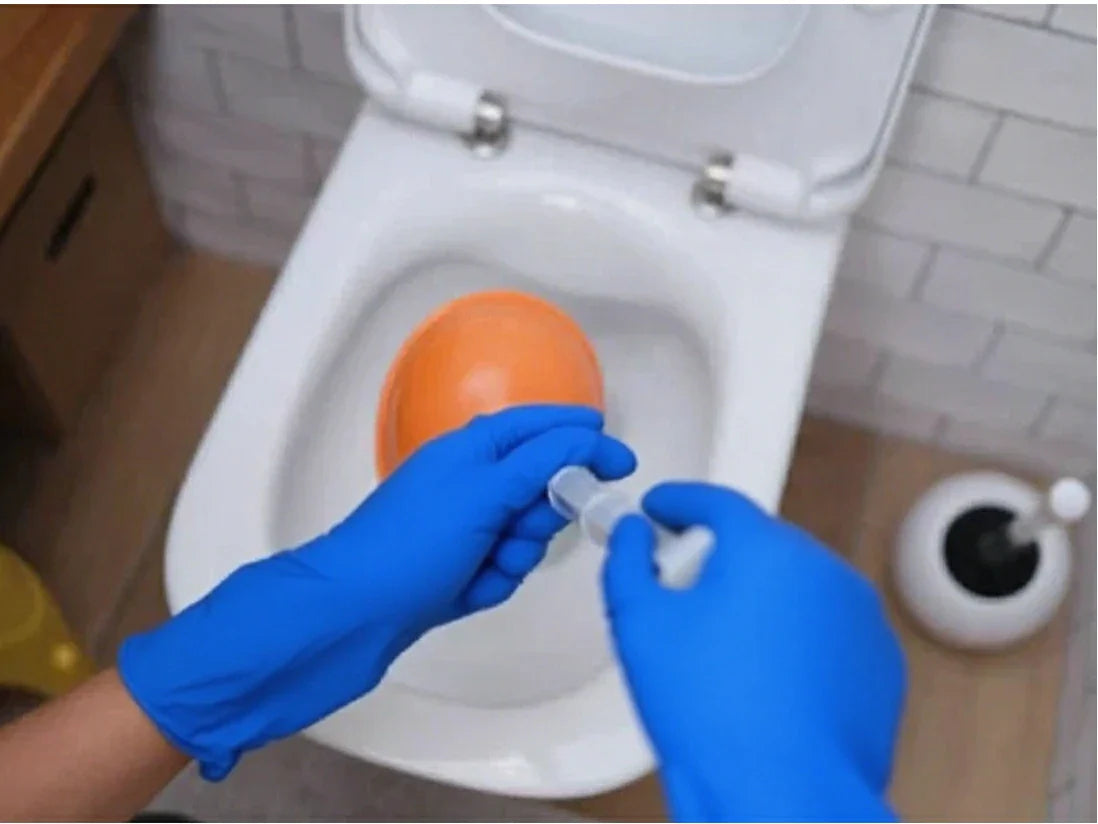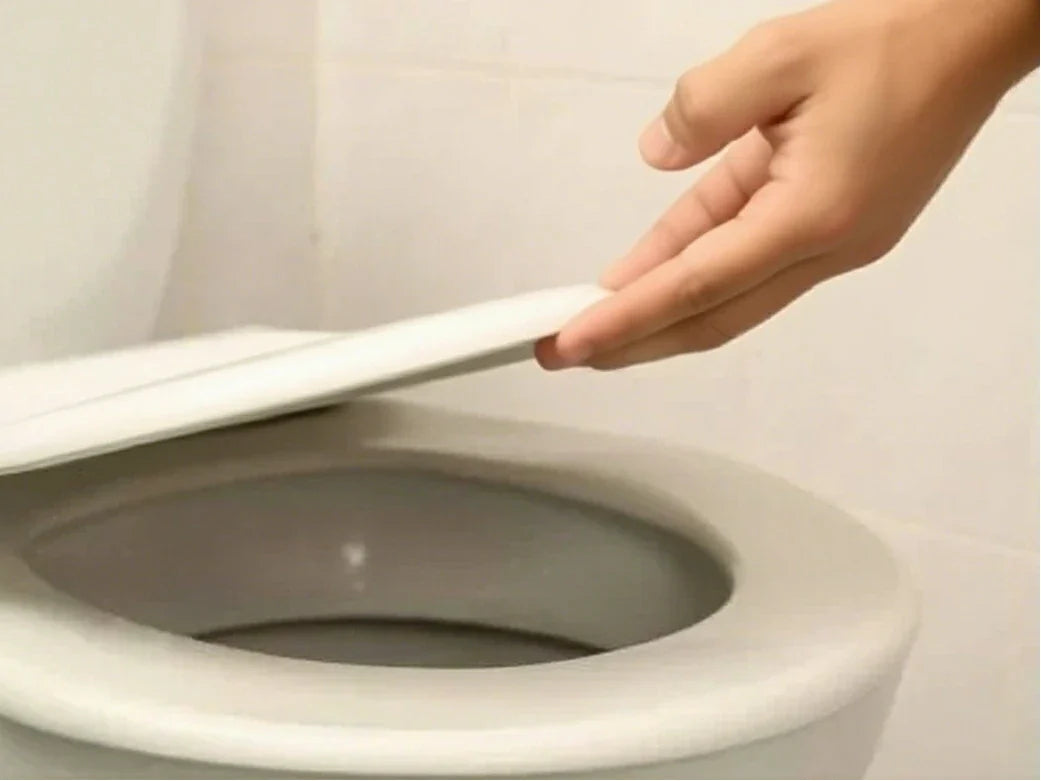A toilet clogged can be really frustrating and inconvenient. We've all faced the problem, of an overflowing toilet, wondering what to do. Luckily, there are effective ways, to fix it, and we're here, to help.
If you need, to unclog a toilet fast or want, to avoid future problems, we've got you covered. Our tips and advice are here, to help you tackle toilet clogged issues. Let's get started and turn these problems, into DIY projects you can handle.
Consider buying a modern HOROW Toilet designed, to reduce clogs more effectively than older toilets.
Why Toilets Get Clogged
Too much toilet paper
Using too much toilet paper often leads, to clogs. This happens when people use more than necessary, creating blockages, in the pipes. Both homes and public restrooms face this problem. Sometimes, kids contribute by flushing large amounts of paper as a joke.
In addition to toilet paper, non-flushable items worsen the situation. These objects further block water and waste flow, complicating the plumbing issue.
Non-flushable items
Flushing too much toilet paper sometimes leads, to clogs. Other items like wipes, cotton balls, and feminine hygiene products also block pipes. Even "flushable" items can cause trouble.
Kids might flush toys or lots of paper, creating a blocked pipe. To prevent toilet clogged problems only flush waste and toilet paper. Use a trash bin, in the bathroom, for everything else. This helps keep toilets running smoothly and avoids plumbing problems.
Inadequate flushing power or plumbing issues
Toilets may not flush well due, to old pipes or a weak system. This issue stops waste from going down properly. Older toilets often lack the strong flush newer ones have, and blockages within the walls, like clogged pipes, add to the problem. These pipes can get blocked after years of use, especially if they are narrow or have bends. Aging pipes, narrow bends, or internal blockages can worsen the situation. Regular maintenance and upgrading to a powerful, efficient toilet can prevent frequent toilet clogged issues.
To keep everything working, it's crucial, to address these issues quickly. A plumber can examine the system and pinpoint the trouble spots. They might recommend upgrading to a toilet with better flushing power or repairing parts of the pipe system, to clear blockages. Regularly checking your toilet and pipes can prevent unexpected clogs or backups, in your bathroom.
Signs of a Clogged Toilet
Slow drainage and water rising in the bowl
Water rising in the toilet bowl or slow drainage shows a clog. Something, maybe too much paper or non-flushable items, blocks water flow. This could mean your toilet will soon overflow. If you see water going up after flushing, act fast to avoid a mess.
Gurgling sounds from the toilet or plumbing
If you notice slow drainage and water rising in your toilet, along with a gurgling sound, this indicates a blockage. The gurgling is similar to the noise when drinking from a straw and reaching the end of the drink—it's air escaping past the clog.
A blocked sewer line or plumbing issue inside your home likely causes these signs. This situation requires immediate attention to prevent further problems like toilet clogged or plumbing damage.
Irregular water flow
Gurgling sounds mean a blockage disrupts the water flow in your toilet. This interference could be from buildup over time. When water flows strangely or you hear odd noises it's likely an issue deep within your pipes or sewer line. It’s important to check these signs early to prevent further damage like bathroom clogs or overflow.
Overflowing toilet
An overflowing toilet turns into a big mess quickly. Water spills over the bowl due to a clog or a sewer line problem. To stop an overflow, shut off the water with the valve behind the toilet. Then, mop up any water to avoid damage.
To fix a toilet clogged problem you might need a plunger or call a plumber if the blockage is severe. Spotting signs like slow draining early can prevent issues. Regularly checking and maintenance stop overflows, keeping your bathroom safe and dry.
Immediate Steps to Fix a Clogged Toilet
Using a Plunger
A plunger often fixes a toilet clogged problem . Most homes own one.
- Choose a flange plunger for its tight seal on the drain.
- Fill the bowl to cover the plunger’s head. Add water if necessary, avoiding spills.
- Position the plunger over the drain hole, ensuring the rubber flange fits inside.
- Start with gentle pressure to release air, then plunge forcefully to break up the clog.
- Continue with strong and fast plunges for 15 to 20 seconds.
- A quick pull at the end might dislodge deeper clogs.
- If water flows freely afterward, the blockage is likely gone.
- No success? Try these steps a few more times before giving up.
- Once successful, try flushing, but watch for potential overflows.
Plunging can clear many simple toilet blockages without calling a plumber.
Using a Toilet Auger
Fixing a toilet clogged problem doesn't have to be hard. Use a toilet auger.
- Buy a toilet auger.
- Wear gloves for cleanliness.
- The auger comes with a long cable. Push this into the toilet's drain.
- When you hit resistance, that's your clog.
- Twist the handle to break up or catch the debris causing the blockage.
- Remove the auger slowly. The obstruction might come out too.
- Do two flushes to ensure water flows smoothly again.
Hot Water and Dish Soap
Hot water and dish soap can unclog toilets without harsh chemicals. Here's the method:
- Boil water or use very hot tap water. Heat helps break down clogs.
- Add a lot of dish soap to the toilet bowl. Soap breaks down materials causing blockage.
- Pour hot water into the toilet from waist height to avoid splashing.
- Wait for the mix to work on the clog. Soap makes things slippery, helping remove blockages, while hot water melts fats.
- Flush to check if the clog is gone. If it works, you're done.
- If still blocked, wait, then try again with more hot water and soap.
This method is safe for plumbing and cost-effective compared to professional services. It works best for small to moderate clogs from organic stuff or grease but may not work for big blockages from objects or a lot of buildup.
Chemical Drain Cleaners
Chemical drain cleaners quickly unclog toilets. They dissolve the cause of the blockage.
- These products are liquids, gels, or powders. Pour them into the toilet.
- They react with the clog and may produce heat.
- This combination breaks down substances like hair or grease.
- Some formulas use strong acids; others rely on basic chemicals.
- Acids eat away at clogs while bases decompose them in a different way.
- It's crucial to follow bottle instructions for pipe safety.
- Wear gloves and goggles to protect skin and eyes from harm.
- Never combine different cleaners due to risks of toxic gas formation.
- Flush the toilet after waiting to remove debris.
- If not resolved, try again later.
Use these steps for handling toilet clogged problems with chemical cleaners.
Preventing Toilet Clogs in the Future
Proper Waste Disposal
Only flush human waste and toilet paper to avoid toilet clogged problems. Wipes, cotton balls, and feminine products cause blockages. Even "flushable" wipes can harm your plumbing because they don't break down like toilet paper. If it's not waste or toilet paper, don't flush it.
Regular Maintenance Tips
To prevent toilet clogged problems clean your toilet often with a gentle cleaner. This prevents mineral and waste buildup that can lead, to blockages. Also, inspect the inside, of the tank several times a year to ensure everything is functioning correctly and there are no broken parts.
Fix leaks immediately to avoid weak flushes that can't move waste properly, causing clogs. Replace worn out or broken parts, in the tank like the flapper or fill valve, to maintain strong flushing power.
Using the Right Toilet Paper
Choosing the right toilet paper helps avoid toilet clogged problems. Some types dissolve faster in water, which keeps pipes clear. Pick brands labeled "septic safe" or "quick dissolving" to prevent blockages. But using too much paper can cause problems.
Thick and plush toilet papers might feel good but don't break down quickly. This matters more with older pipes or septic tanks. Using thinner, single-ply options can help a lot. Also, teach everyone to use less paper per flush.
Upgrading to a HOROW Modern Toilet to Avoid Clogs

A HOROW modern toilet prevents toilet clogged problems with its strong flushing system and low water use. This reduces blockages, saving you from often unclogging your toilet or calling a plumber. These toilets also give your bathroom a modern look and are eco-friendly.
Being proactive about our plumbing needs can save us a lot of money, in the long run. Getting a HOROW Modern Toilet is a wise choice. It gives us peace of mind and a reliable solution, to clogs. Let's make this investment, to keep our homes running smoothly!
HOROW T36

The HOROW T36 toilet is known for its prevention of toilet clogged problem, due to its booster pump which maintains consistent water pressure, for efficient flushing purposes. Therefore this enhanced flushing feature greatly minimizes the chances, of clogs occurring in areas, with water pressure levels supporting dependable operation and offering reassurance to users.
Moreover, the T36's pulse massage function, self-cleaning nozzle, and enhanced hygiene features reduce the likelihood of blockages compared to models. The automatic lid opening mechanism and smart design also improve user convenience ensuring a smooth and easy bathroom experience.
HOROW T37

HOROW T37 smart toilet effectively minimizes the risk, of a toilet clogged situation with its advanced features. The off-seat flushing function automatically flushes the toilet five seconds, after you leave the seat, preventing waste buildup that can lead, to clogs. The dual flush system offers efficient water usage, ensuring powerful waste removal while conserving water.
Compared, to other models the HOROW T37’s five-position spray bar and multiple cleaning functions provide thorough cleansing, reducing the chance, of blockages caused, by residue buildup. Its SIAA antimicrobial certified seat and intelligent bidet functionality enhance hygiene and maintenance, making clogs less likely, to occur.
HOROW T38

The HOROW T38 stands out, in preventing toilet clogs, with its advanced flushing system, featuring four versatile flushing options including auto, foot-kick, knob, and remote control. The built-in water tank ensures consistent, powerful flushes even in homes, with low water pressure, significantly reducing the risk, of clogs. Additionally, the pre-wet feature prepares the bowl, for a cleaner, smoother flush, effectively preventing debris buildup.
In the event of a toilet clogged and needing unclogging with the T38's unique design and sleek surfaces can make the process easier compared to older toilets. Its self-cleaning nozzle and efficient flushing system that minimizes clogs, for a dependable and convenient bathroom experience.
FAQs
1. What can cause a toilet to be clogged?
A toilet might get clogged due, to several reasons. Commonly, it's because of flushing items that don't dissolve or break apart in water such as baby wipes, paper towels, or excess amounts, of toilet paper.
2. How can I fix a clogged toilet?
You can often unclog your toilet using a plunger. Place the plunger over the drain hole and push down firmly but slowly - then pull up quickly. Repeat this until the water starts to drain.
3. When should I call a professional for my clogged toilet?
If you've attempted to unclog a toilet without success and its still not draining properly it might be an idea, to contact a plumber who possesses the tools and knowledge, to address the issue.
4. Can routine maintenance prevent my toilet from getting clogged?
Yes! Regular cleaning with appropriate products helps maintain clear pipes reducing chances of blockages. And remember not to flush non-dissolvable items!
5. Can HOROW toilets handle thicker or plush toilet paper?
Yes! HOROW toilets are designed to remove waste when using thicker toilet paper. However, for best results it is recommended to use toilet paper that is septic safe or quick dissolving.








Leave a comment
This site is protected by hCaptcha and the hCaptcha Privacy Policy and Terms of Service apply.